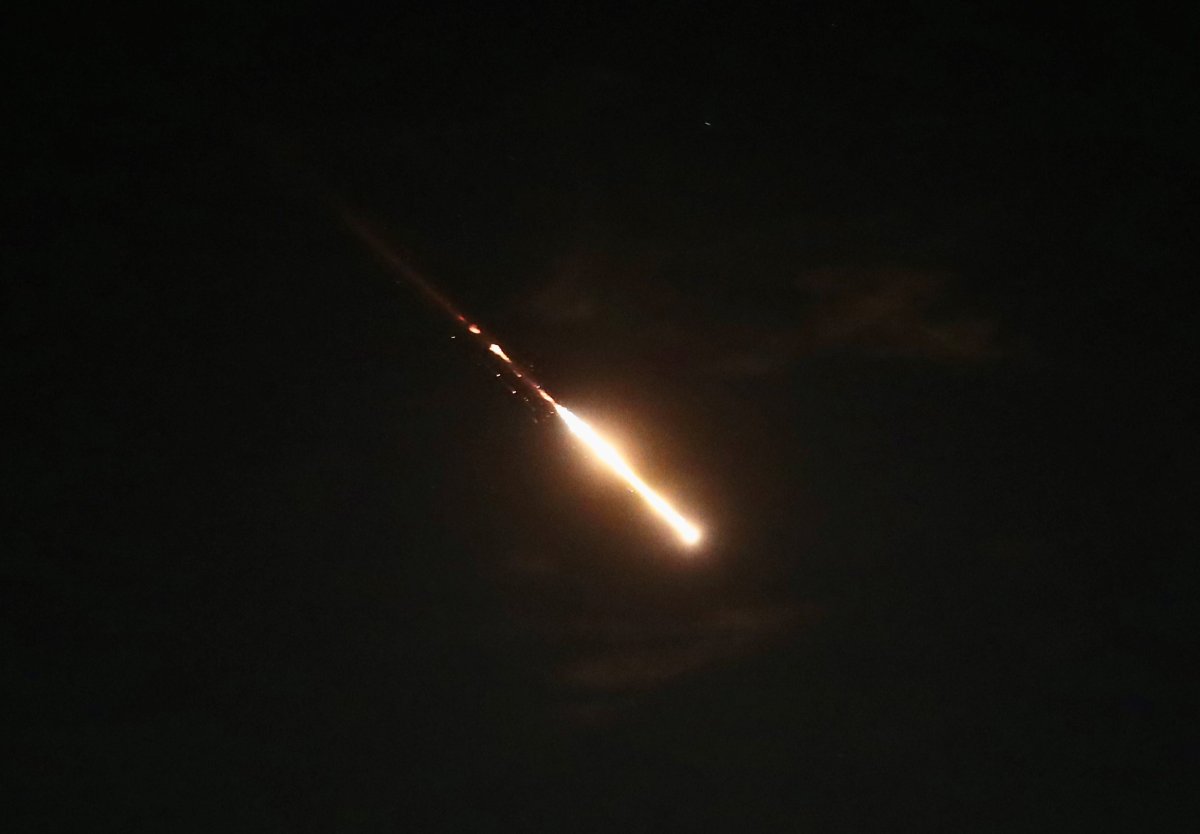The recent military clash between Iran and Israel marks an historic moment in modern warfare. With an unprecedented barrage of more than 300 drones, cruise missiles, and ballistic missiles, the conflict tested Israel's (and its allies) vaunted missile defense systems like never before. And while the interception of 99 percent of the missiles aimed at Israel showcases the Jewish State's defensive capabilities, it also highlights the evolving threats in the Middle East.
On the one hand, Israel's response was a stunning display of technological prowess. The Arrow ballistic missile defense system, the top level of Israel's defensive architecture, intercepted around 120 ballistic missiles aimed at critical assets, including an air force base housing the advanced F-35 fighter jet. Although most missiles were neutralized, the fact that some reached their targets underscores the stakes involved.
The systems that were mainly used to intercept the ballistic missiles were the Arrow-2 and the Arrow-3, capable of intercepting missiles during the space-flight portion of their trajectory. While the more famous Iron Dome system was also activated, it was used to down some of the more than 100 drones sent at Israel, while David's Sling—the medium-range defense system—was used to shoot down the cruise missiles.

Both Arrows are jointly developed by Israel Aerospace Industries and Boeing in the United States. The program was started in the mid-1980s, after President Ronald Reagan invited America's allies to join the so-called Star Wars program being developed by the U.S. to protect the country from Soviet intercontinental ballistic missiles. Yitzhak Rabin, Israel's defense minister at the time, recommended joining and the Arrow was one of the projects the Israelis presented the Americans, winning a grant for its development.
While the technical success of these systems is laudable, the implications of Iran's assault are profound. Traditionally, Iran has refrained from direct confrontations, opting instead to exert its influence through proxy groups like Hezbollah, Hamas, the Houthis, and others. This strategy provided Iran with plausible deniability, kept direct retaliation at bay and allowed it to project power far from its borders. This first direct attack from Iranian soil represents a significant escalation and a shift in tactics.
This direct approach suggests that any significant Israeli action against Iran, such as targeting military leaders or sabotaging nuclear facilities, could now provoke a direct missile response. This development puts Israel in a precarious position, forcing it to reconsider its defensive posture and strategic calculations.
For this reason, Israel cannot be complacent. While it succeeded this time, it will not always be able to rely on the United States and other countries to assist in intercepting the drones and some of the missiles.
In addition, with the interception of dozens of missiles by the Arrow, Iran will now have the potential ability to learn what worked in the way it fired its missiles, which ones got through and why, and then adapt ahead of future attacks. Basically, Israel's interception achievements, as remarkable as they were, can serve as something of a blueprint for Iran to analyze and try to circumvent in future assaults.
According to U.S. military assessments, Iran has approximately 3,000 ballistic missiles in its arsenal, and based on the recent attack against Israel, it is now known to have more than 120 missile launchers. All this shows that Iran has faced almost no limitation on its ability to manufacture missiles and associated equipment.
For this reason, Israel knows that it cannot simply wait, and is drawing its own lessons to understand why a handful of the missiles penetrated air defense systems and succeeded, for example, in striking the Nevatim Base in the Negev Desert. While that missile caused very little damage this time, that might not be the case when there is another attack in the future.
One of the missiles believed to have hit Israel is the Emad, an upgrade of the Iranian Shahab-3, which was a derivative of the North Korean Nodong missile and has a range of about 1,120 miles. The missile is equipped with a multiple-reentry warhead that improves its accuracy and operational lethality.
The future is especially concerning due to Iran's pursuit of a nuclear capability. If Iran believes that it can overcome Israeli air defenses with a barrage of missiles, what is to stop it from installing a nuclear warhead on a few of them? While 99 percent success is incredible, a 1 percent failure rate cannot be tolerated when contemplating a non-conventional attack. Even a single missile can have catastrophic consequences.
The economic aspect of creating this missile shield cannot be ignored, either. The cost of each Arrow missile interceptor is estimated at $3 million. Iron Dome interceptors are cheaper, priced between $50,000 to $100,000 each. This would be a crushing expense in any prolonged conflict.
Israel's conflict with Iran has emerged from the shadows, and after the recent attack, we are now witnessing the birth of a new arms race in the Middle East. Iran will try to adapt and develop capabilities to overcome Israel's missile defense system, while Israel's challenge will remain what it has long been—stay at least one step ahead of the enemy.
Yaakov Katz is a senior fellow at JPPI, a global think tank for the Jewish people, and the author of Shadow Strike: Inside Israel's Secret Mission to Eliminate Syrian Nuclear Power and Weapon Wizards: How Israel Became a High-Tech Military Superpower.
The views expressed in this article are the writer's own.
Uncommon Knowledge
Newsweek is committed to challenging conventional wisdom and finding connections in the search for common ground.
Newsweek is committed to challenging conventional wisdom and finding connections in the search for common ground.
About the writer
To read how Newsweek uses AI as a newsroom tool, Click here.








